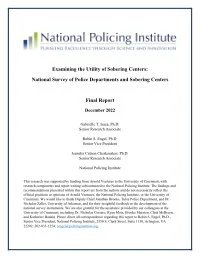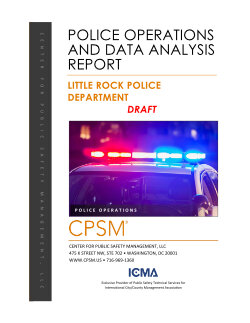By Gabrielle T. Isaza, Robin Engel and Jennifer Calnon Cherkauskas
Sobering centers offer a unique opportunity to reduce arrests for vulnerable populations while removing a person from a potentially dangerous situation. Despite the long and complex history of their use, little is known systematically about the effectiveness of sobering centers as an alternative to arrest. Only a handful of studies have examined the impacts of sobering centers on the criminal justice system, and these studies typically focus on a single site. To build the evidence on sobering centers, Arnold Ventures funded our research study assessing the utility of sobering centers as an alternative to arrest. This report is the first in a series detailing our multi-method and multi-site research study, launched in January 2020. In this research study, examine four primary research questions: 1. What are the patterns of policies and practices for police use of sobering centers as an alternative to arrest? What guides this decision-making? 2. What are the situational factors police use in practice to determine whether or not to use sobering centers as an alternative to arrest? 3. How do police balance and overcome policy and legal inconsistencies guiding the transport to and use of sobering centers? 4. When individuals are sent to sobering centers in lieu of arrest, does it alter their relative risk of recidivism or future contact with police? This report focuses on the quantitative findings of Phase I, disclosing the results of two national surveys—one for law enforcement agencies and one for sobering center facilities. Survey findings shed light on how police use sobering centers and the perceived benefits and barriers to their use. In turn, the survey findings also provide important insights on how to build effective partnerships and enhance the utility of sobering centers as an alternative to arrest.
Arlington VA: National Policing Institute, 2022. 78p.





















